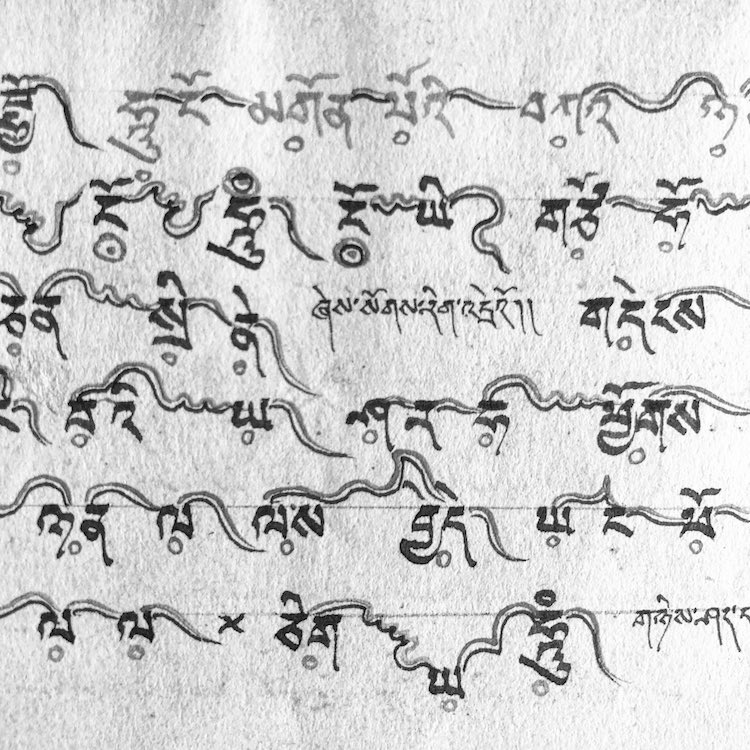
Photo: The Hum
Musical notations can go far beyond what is indicated on the page. For Tibetan Buddhists, these figures have religious importance that represent sacred sounds and ceremonies that have been passed along for generations. Visually beautiful, the sweeping notations help to shape their rituals by offering other forms of devotions, ways to ward off “feral spirits,” as well as summon divine figures.
For those that don’t understand the meanings of the intricate musical notations, they seem to resemble tiny landscapes on paper. The peaks and valleys, however, describe a myriad of instructions—from rhythmic patterns to instrumental arrangements. The symbols are a guide for the ritual performance; music is understood to be paired with the likes of “chanting, visualizations, and hand gestures.”
The Yang tradition is considered to be one of the most revered and elaborate traditions in Tibetan music. Using the Yang-Yig system of notation, we can understand the essence of the music by the marks. “The chant consists of smoothly effected rises and falls in intonation, which are represented by complex curved lines,” The Schoyen Collection notes. “The notation also frequently contains detailed instructions concerning in what spirit the music should be sung (e.g. flowing like a river, light like bird song) and the smallest modifications to be made to the voice in the utterance of a vowel.” Sung at a low pitch, the pace is meant to linger to allow for “full expression of the chanted text.”
Tibetan Buddhist musical notations are beautiful symbols of devotion.

Photo: The Schoyen Collection
The elaborate marks describe rhythmic patterns and instrumental arrangements, and they're also a guide for the ritual performance.

Photo: Jo De Baerdemaeker
The symbols are a guide for the ritual performance; music is understood to be paired with the likes of “chanting, visualizations, and hand gestures.”

Photo: Jo De Baerdemaeker
Watch Tibetan monks perform amazing throat singing (a form of chanting) below:
h/t: [Open Culture]
Related Articles:
Traveling Photographer Captures the Quiet Beauty of Young Monks Reading
Tibetan Monks Painstakingly Create Incredible Mandalas Using Millions of Grains of Sand






















































































